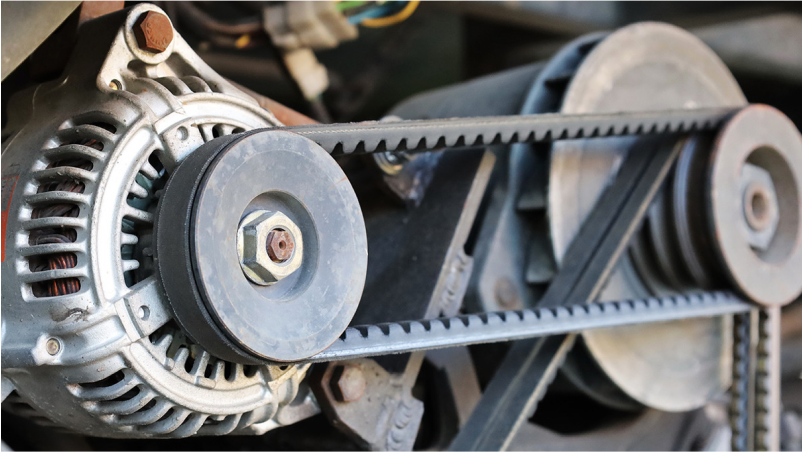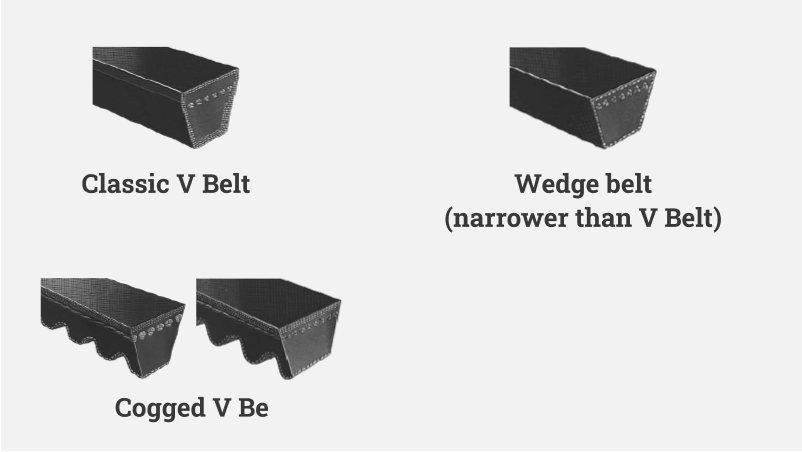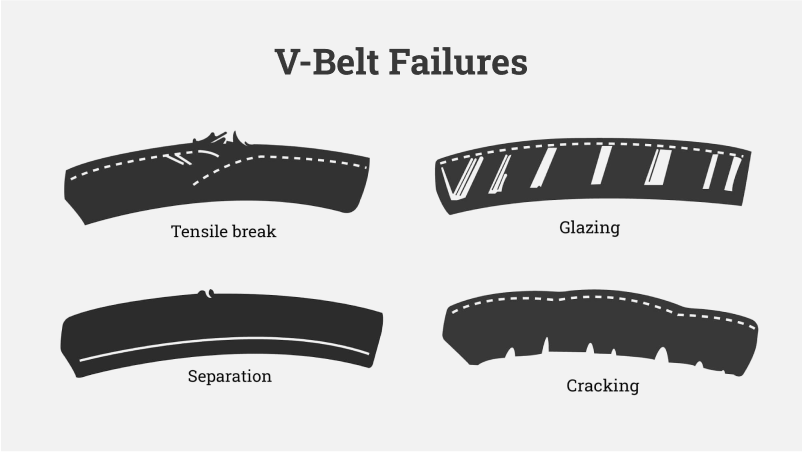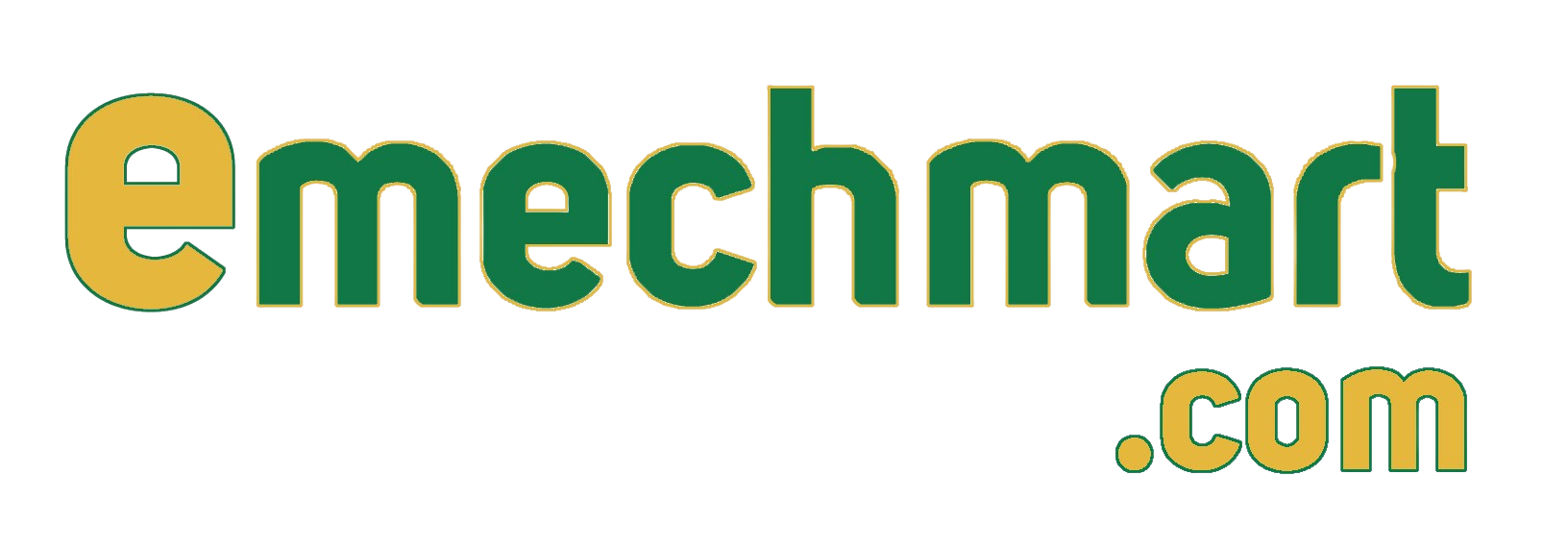To stay competitive, the modern day industries need advanced technologies and solutions. Transformation of power is one such aspect that modern day industries should leverage to reach optimum performance level. There comes the role of V-belt pulley as sit is created to transmit power between axles with the help of belts. Such V-belt pulleys are highly in demand of its robust contribution and high-speed transformation of power.

V-belts are transmission belts that can be used to transform power from drive shaft to driven shaft. V-belts are popularly used in different range of industrial and automotive application including pumps, conveyors and heavy-duty machines. They are designed to help them grip the pulleys to transmit friction.
How does the pulley work?
According to the Business wire, industrial pulleys are becoming the first choice of smart idlers who are seeking mechanical advancement to drive growth in their operations.
As the most proficient material handling tool, V-belt pulleys are certified for smooth operations, heavy load-carrying capacities and low friction on surfaces. As per the reports, experts forecasted a 4% growth for the global industrial pulley market.
Thus, by providing a compact and efficient means of transmitting power, different types of v belt pulleys help improve system efficiency, reduce maintenance costs, and increase the overall reliability of mechanical systems. Choosing the correct type and size of V-belt is important for several reasons:
- V-belt pulleys efficiently transform power by improving the overall efficiency of the system.
- It should also be reliable as the V-belt can slip out more quickly, resulting into accident and bearing additional maintenance.
- You should also check if the V-belt is compatible with the other components like shape, design, material and size.
- You should select the correct belt tension as tension is important for power transmission and long-term reliability for the industrial application.
- You should also check if the belt is able to operate in different circumstances and can be tolerant to moisture, chemicals, temperature and other factors, affecting the long-term durability of the application.
Thus, it is ideal to check all these aspects before finalizing the V-belt pulleys for your industrial application. Besides, here are other factors that you should determine before investing in highly-durable pulleys.

V-Belt Types
There are many possible types of V-belts available:
- Light Duty – Suitable for light duty applications typically using fractional horsepower motors
- Classical Heavy Duty – Wide range of sizes
- Molded cogs – cogs allow the use of smaller diameter pulleys and provide heat dissipation; Raw edge sidewalls prevent slippage
- Wedge – narrower, deeper profile with greater power potential than classical V-belts; Allows for smaller, more compact drives
- Wedge Cogged – Same properties as a wedge, but cogged for greater flexibility and heat dissipation
- Banded – Two or more V-belts are joined to form a single belt which allows the belt to operate as a single belt with uniform load distribution and wear.
Comparing all types of V-belts
Here is a detailed comparison between standard V-Belts, multiple V-belts and narrow V-belts.
| Descriptions | Standard V-belts | Multiple V-belts | Narrow V-belts |
|---|---|---|---|
| Design | Standard V-belt has a traditional single belt design | Multiple V-belts have multiple belts connected together | Narrow V-belts have a smaller profile than standard V-belts |
| Application | Standard V-belts are suitable for moderate power transmission | Multiple V-belts are for high power transmission | Narrow V-belts are for limited space applications |
| Power transmission | They can transmit up to 50% more power than flat belts | can transmit up to 70% more power than Standard V-belts | They are suitable for lighter loads |
| Cost | They are the most economical option for industries | They are more expensive due to the multiple belts | They are typically more expensive than standard V-belts |
| Maintenance | They require routine maintenance | Routine adjustments are necessary for this type. | They require less maintenance due to their smaller size |
V-Belt Sizes
V-belts are belts with trapezoidal cross-sections. Like other types of belts, they are used to transmit power or torque from the driving component to the driven component. Their design facilitates grip on the roller components (i.e., pulleys) during operation, reducing the risk of slippage and increasing the stability of the system’s output.
These components come in many variations, each offering unique characteristics that make them suitable for use in a wide variety of applications. examples include:
- A type V-belt with 1/2 inch top width
- B type V-belt with top width of 21/32 inches
- C type V-belt with 7/8 inch top width
- D type V-belt with top width of 1 1/4 inches
- E type V-belt with top width of 1 1/2 inches
Choosing the Right Size for efficient performance:
Measure the width of the belt to determine which type of belt is right for your application. Most belts are the belt type with a gauge of 1/2″. If the belt measures 5/8″ it is classified as a Type B belt.
You may see a belt described as an AX type. X means it has a cogwheel design or notch in the belt. Cogged profiles enhance power transfer and are generally used only for industrial applications due to their high cost.
Tips for selecting the accurate belt size:
Here are some tips that you should consider for selecting the accurate belt size.
- The belt profile, or the style and shape of the belt, is being consolidated.
- The outside diameter, or distance around the pulley, as measured between the edges of the groove.
- The center diameter is the center or distance between the pulley shafts in the transmission. V-belt transmission is limited by the center distance, which should not exceed three times the diameter of the largest pulley, otherwise significant slippage may occur.
- Grooves, including the number of grooves on the pulley and the angle and width of the flange.
- The pitch diameter, or the diameter of the pulley where the belt is engaged, is critical to the power-to-weight ratio of the drive.
- Arc of contact is the degree to which the belt wraps around the pulley.
Selecting and maintaining the V-Belt
Investing in V-belt is a onetime decision that have to take to run your application smoothly. Here are a few factors that you should consider to make an informed decision.
- Power transmission requirements: Consider the horsepower, speed and torque requirements of the drive before selecting the V-belts for your industrial application.
- Belt tension: Ensure the belt has proper tension to prevent slipping and excessive wear. It should be enough to prevent slipping and excessive wear, but not too much to cause stress on components.
- Environmental conditions: Check for temperature, moisture, chemicals, and other conditions that may affect the belt.
- Belt size and cross-section: It should fit properly for pulleys and ability to transmit power. The length should be appropriate for the distance between pulleys.
- Operating conditions: The V-belts should be tolerant to extreme temperature, moisture, chemicals, and other environmental factors.
- Material: Choose a material suitable for the application, such as oil resistance, heat resistance, etc.
- Cost and maintenance requirements: All you need is to balance initial cost with long-term durability and maintenance costs.

Tips for maintaining V-belts:
You must need to maintain the V-belts in good condition to maintain optimum productivity level. Also, maintaining them can help you prevent failure and enduring replacement costs of V-belts. Here are few tips that might help you to keep V-belts in good shape for longer period of time.
- Regular inspection: Check the belts regularly for signs of wear, damage, or improper tension.
- Proper tension: Maintain the proper tension to prevent slipping and excessive wear.
- Alignment: Keep the pulleys and belts properly aligned to prevent misalignment and damage.
- Cleaning: Clean the pulleys and belts regularly to prevent buildup of debris and contaminants.
- Storage: Store belts properly to prevent damage from heat, moisture, and chemicals.
- Replacement: Replace belts when they show signs of excessive wear or damage to ensure efficient power transmission and long-term reliability.
- Professional maintenance: Consider professional maintenance to ensure proper belt condition and performance.
By following these tips, you can help extend the life of your V-belts and improve the overall efficiency and reliability of your mechanical system.

Best practices for replacing V-belts:
Tensile failure, cracking, glazing, and separation of layers are some of the reasons you might need to replace your V-belts to keep your application running smoothly without creating a hindrance.
Here are some best practices that you need to follow to reach optimum productivity through your industrial application by installing the V-Belts in a proper manner.
- Use proper tensioning techniques to ensure proper belt performance.
- Verify the correct belt size and type for the application.
- Inspect the pulleys and replace if damaged or worn.
- Clean the pulley grooves before installing the new belt.
- Align the pulleys to ensure proper belt tracking.
- Tighten all belt adjustment screws and bolts.
- Check the belt tension and adjust if necessary.
- Run the system and inspect for proper belt operation.
- Store spare belts in a clean, dry location.
It is recommended to follow the manufacturer’s guidelines and recommendations for specific belt before starting the replacement process.
Conclusion
Just as a car cannot move an inch without fuel, industrial machines will never function without V-belts. This shows how important it is to have V-belts in machines. Remember that in manufacturing industries, machines need motion to perform defined tasks and the most efficient way to provide that to the two ends of a shaft is where the V-belt comes into play. Its benefits cannot be underestimated, unless you buy from a good vendor.
If you are seeking V-belts for your Industrial application, look no further than Emechmart. Emechmart offers a variety of V-belts including Rubber Wrapped, Rubber Raw Edge, Banded and Linked V-belts to meet the needs of a wide range of applications. Emechmart is a well-known portal that provides quality rubber and synthetic V-belts for automotive and tire applications, commercial and home equipment, and construction and industrial equipment.
